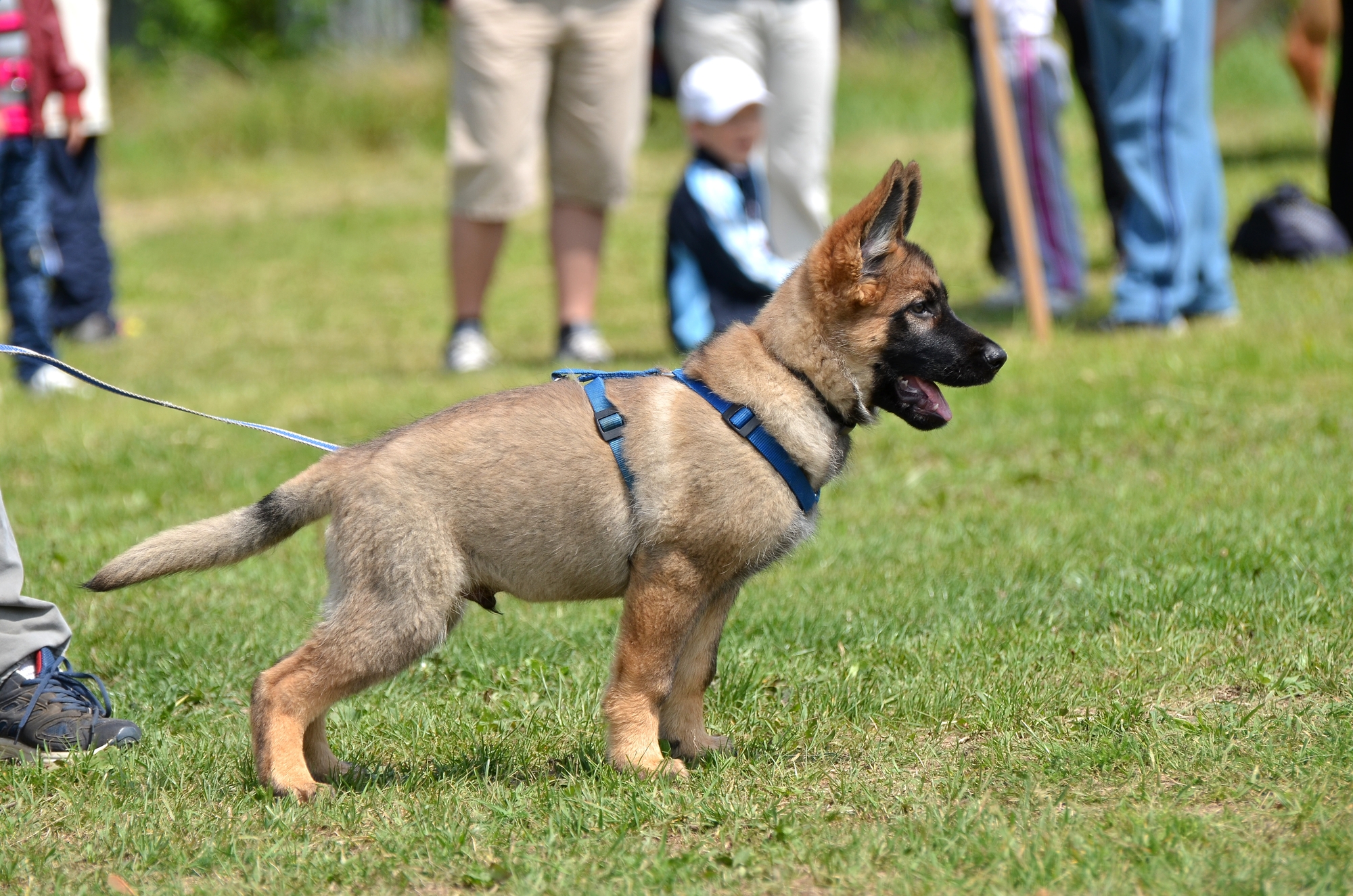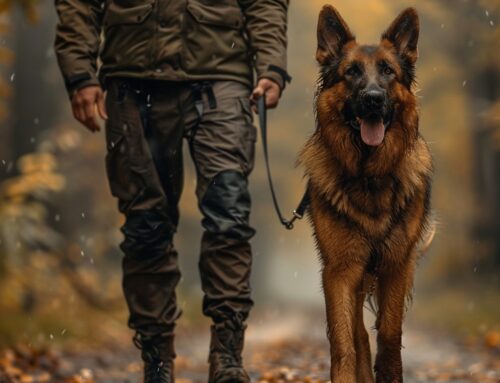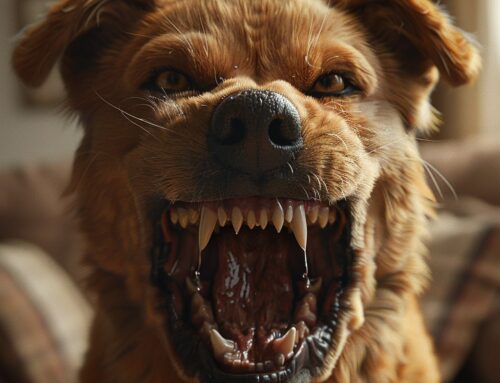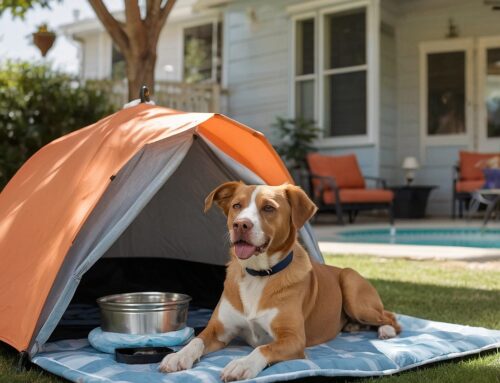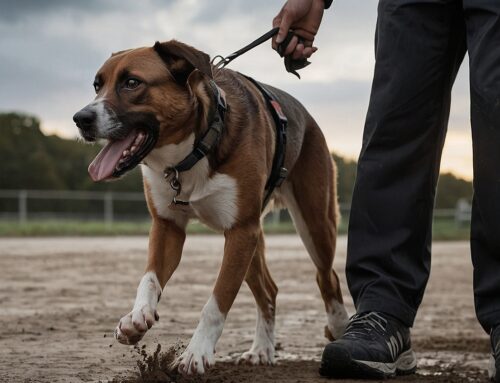Perhaps you have been one of the lucky and proud parents of a new puppy you’ve received for the holidays. If you’ve never had a dog before, the prospect of caring for one may seem overwhelming at first. However, with a little help from your friends here at Performance K9 Training and Boarding, you and your puppy will be off to a roaring and perfect start!
It’s important to equip yourself with as much help and knowledge as possible before you welcome your new little companion into your home. In this article, we’ll cover the following points:
- Getting supplies
- Puppy-proofing your home
- Making your yard safe
- Naming your Puppy
Getting Supplies
When you get a puppy, it’s just like bringing a new baby into your home, and just like with a baby, you need to get prepared with a myriad of supplies. The basic supplies you need are as follows.
Food and Water Bowls
Don’t overwhelm your puppy with a big bowl that he could get lost in, even if you know he’s going to grow to be a large-sized dog. You can do an upgrade when he grows larger. Also, stainless steel is the best choice as it does not hold odors and won’t break.
Dog Food
It’s important not to switch up a puppy’s food at this point, so be sure and ask the breeders what food he’s been eating. Some breeders may even send you off with a small bag of the food.
Adjustable Collar
Consider purchasing a breakaway collar that will release if your puppy gets hung up on something. Also, your choices of collar materials are nylon and leather which are more comfortable than other materials.
Leash
Leashes are also available in a variety of materials that also include nylon, chain, and leather. Although maybe pricier than the other options, a leather leash is the most durable and will last many years.
Identification Tags
As a new puppy owner, your worst nightmare might be that your puppy will somehow escape from your home or yard. If your puppy becomes lost, an identification tag with your puppy’s name, your name, and your phone number on it will give you a better chance of finding and getting him home.
Dog Crate
A dog crate is an indispensable item that serves a multitude of purposes for you and your puppy. The number one goal is that it becomes his “safe place” or sanctuary where he can get away and relax. Therefore, try to place it in a quiet area in your home. It also affords you the ultimate training device for potty and other training.
Dog Bed
As an adjunct to the crate, consider purchasing at least one dog bed that you can put in another, high-activity room in your home.
Toys
A busy dog is a happy dog, so invest in a variety of toys, including chew, puzzle, and plush toys. You’ll quickly find out which are his favorites. Never leave a puppy or dog unsupervised with these toys.
Treats
Treats are your number one aid in training your puppy, so be sure to have plenty on hand that are made just for puppies.
Puppy Proofing Your Home
Puppies are curious little creatures who have no regard for their own wellbeing and safety. What this means is that you need to do a thorough and complete job of puppy-proofing your home.
Set Up a Confined Area
For the first few days or weeks, set up a small, confined area where your puppy can be safe and where you can limit where he’ll have mistakes. Some people use a small bathroom or use baby gates to section off an area in a larger room. It’s important that you also put the crate in this area, so it becomes his safe zone right from the start. Once he progresses in his training, you can expand his “territory.”
Electric Cords and Outlets
It goes without saying that chewing an electric cord or licking an electric wall outlet can result in serious damage or even death. Hide cords or use cord concealers. Also, insert plastic safety plugs into unused outlets.
Trash Cans
The contents of trash cans provide an irresistible panacea of smells for young puppies and are therefore a potential danger zone. Using lids or placing smaller trash buckets out of reach are essential tactics for keeping your puppy safe from choking or ingesting dangerous materials.
Cleaning Supplies and Medication
Serious danger lurks in cleaning supplies and materials. Place yours out of reach and even consider using baby cupboard locks for any toxic items kept under the kitchen sink. The same is true for any medications, either prescriptions or over the counter.
Plants
Some plants are toxic to dogs and puppies, so take an inventory to see if any of yours are potentially dangerous to your puppy. You can find a complete list of toxic plants at ASPCA Toxic and Non-Toxic Plant List – Dogs | ASPCA
Making Your Yard Safe
Just as you puppy-proofed your home, you want to be sure your puppy is also safe in your backyard.
Fencing
Puppies can be infamous little escape artists, so if you have fencing to restrict him, consider these facts:
- Chain link: the most commonly used option is inexpensive and works well. However, walk along the inside and outside perimeters to make sure there are no gaps or areas that allow for an escape.
- Privacy: the plastic material in this type of fencing is durable and provides good, safe containment.
- Electronic systems: these underground fencing systems work to electronically control the puppy by using a shock collar that elicits a warning if he gets too close to the underground fencing wires. These systems work to keep him in, but they do nothing to keep anyone or anything out.
Plants
The same holds true here as for your indoor plants.
Swimming pools
Take a close look at how you can keep your puppy safe from falling into your swimming pool. Put up a gate to block his access and always supervise him. Invest in a puppy life jacket and work on teaching him to swim as soon as possible.
Naming Your Puppy
Some new puppy owners claim their pup tells them its name right away, while other owners scratch their heads for days, or even weeks before coming up with the “right” name. Here are some clues to help you come up with the perfect name for your puppy.
- Come up with something different, especially if you have other pets in the home. You want each pet to be able to distinguish its name easily.
- Stick to one or two syllables, max. More than that gets confusing for the puppy.
- Make the name sound friendly. Avoid a name that sounds commanding or harsh.
- Study your pup’s personality. Some puppies really do tell their owners what their name is!
- Avoid using anything “off” or inappropriate.
- Consider a name ending in a hard consonant sound, specifically the letters P, K, and D. These letters create a high-energy sound that attract dogs’ attention.
- Try the name out: sometimes people choose a name that just doesn’t fit. If that happens to you, move on until you come up with the name that totally fits your puppy.
In our next article, we’ll talk about introducing your puppy to other canine, feline, and human family members, how to handle your puppy’s first few days at home, teething issues, and our Yappy Puppy program which helps new puppies and owners get off on the right feet and paws.



